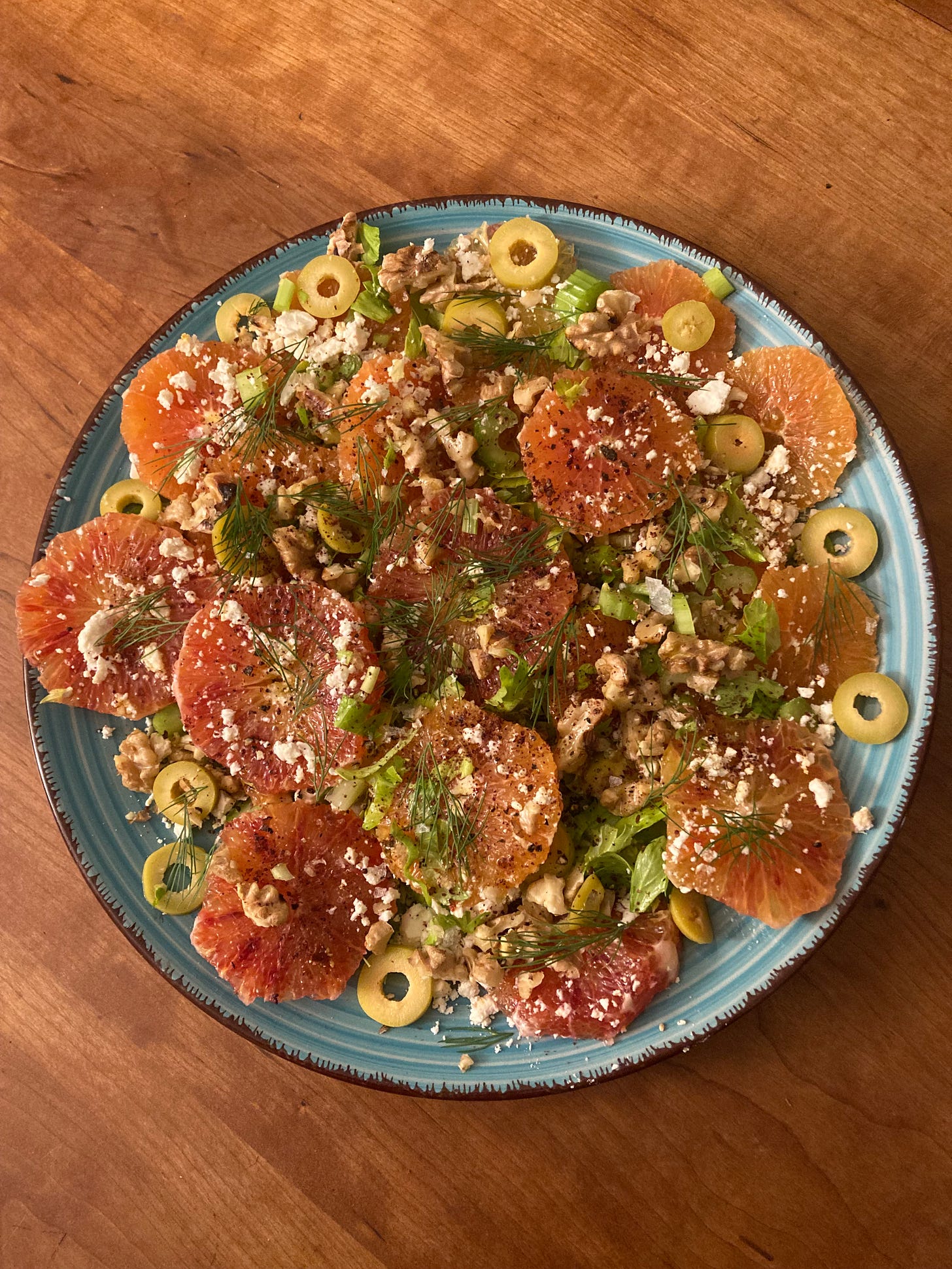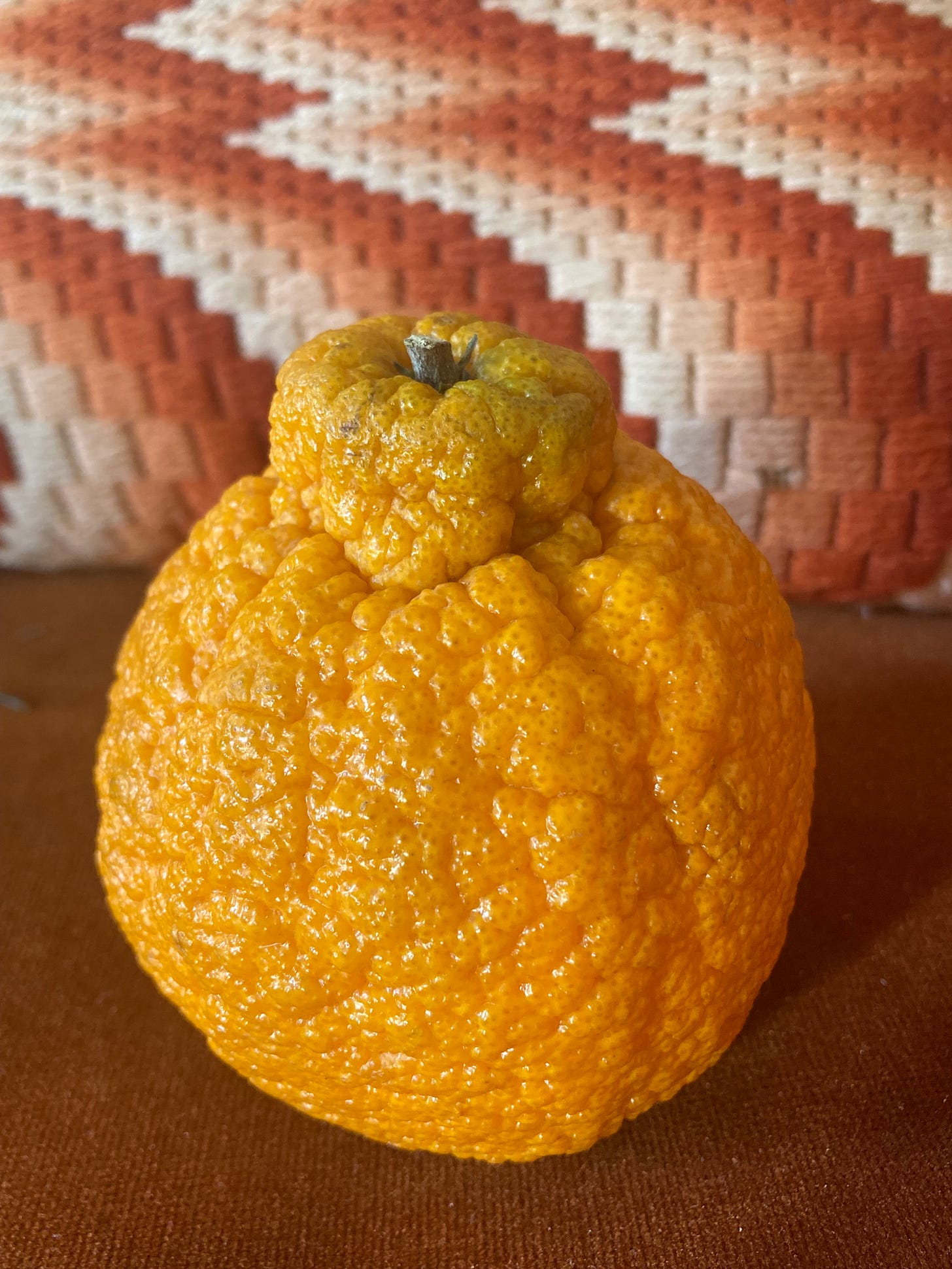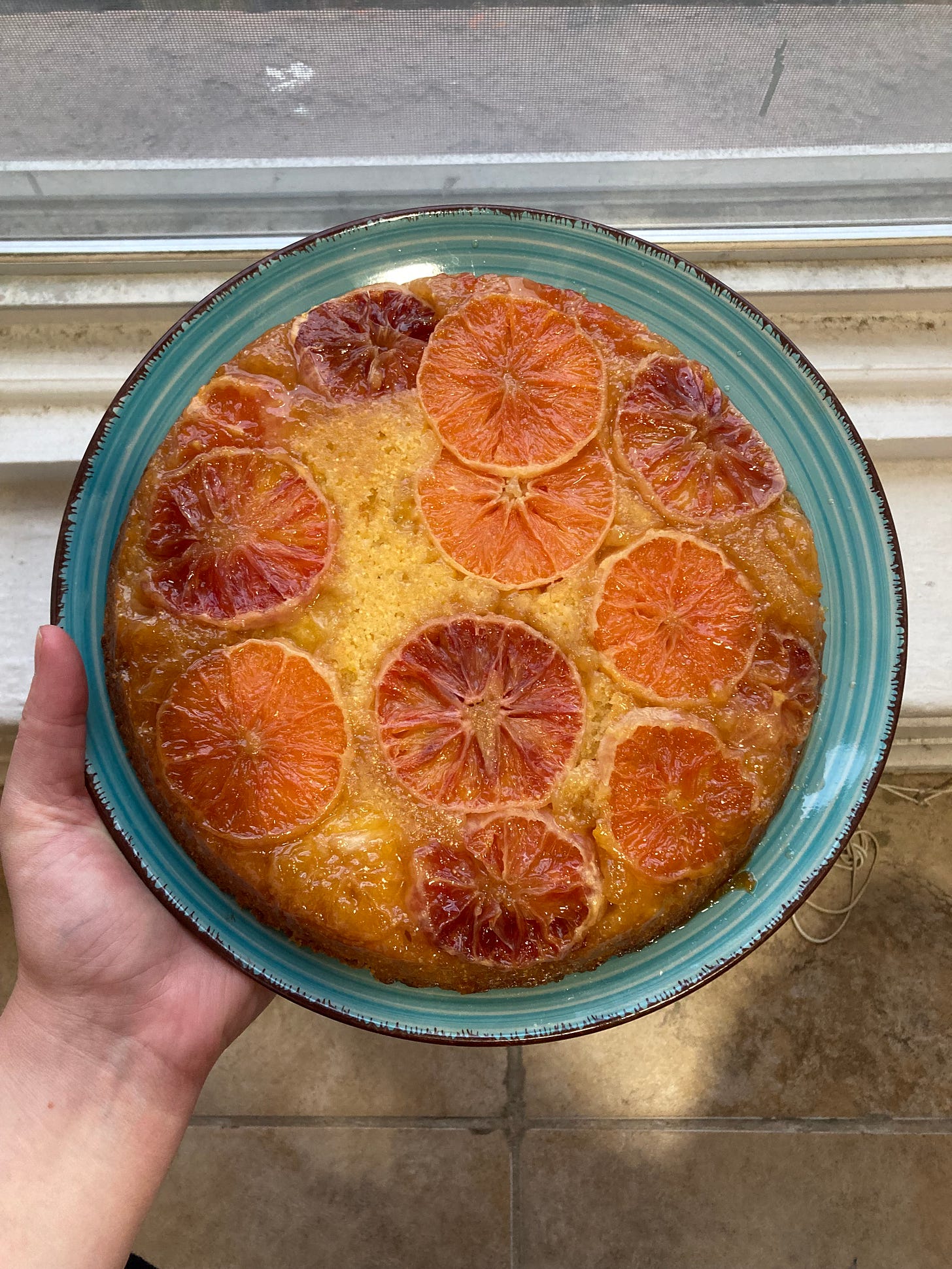I had a professor once say that there were two privileges to writing in English: the real, and the false.
The false privilege was the anglophone hegemony: the cultural and linguistic dominance that meant writing in English was always more likely to be read, talked about, translated, and preserved.
The real privilege, though, was the duality: the richness and flexibility English gives writers on account of its bastard history. English has two ways to say most everything: the Anglo-Saxon and the Latinate. We have thanks and gratitude, kindness and congeniality, ghosts and spirits. Each feels different, and that is a true gift. Borges, who had an English grandmother and read the language fluently, talked about this.
I am thinking about that now, because it is citrus season.
I have always experienced citrus season as a miracle. Here I am, living in both the global and the American north, and at the exact time of year when the wind hurts my face and the sun sets too early and the cold dries out my lips and hands until they peel and flake and crack and bleed, what appears in reams at my local grocery stores but the juiciest, brightest, sunniest fruit of all?
In my kitchen right now I have regular lemons and Meyer lemons; sumo, cara cara, and blood oranges; and pale, exquisite, nameless limes from Tom’s family’s tree in Berkeley. I don’t have any grapefruits, but I look forward to buying some: I love to butcher them with my hands, tearing apart each segment to suck out the pink flesh. I need citrus and I always have. As a child I loved sourness so much that I used to eat the lemon slices meant for iced tea. I’ve stopped doing that, mostly, but I still cook with tons of citrus year-round. My palate craves bright, bracing flavors.
I only eat oranges when they’re in season, though. A summer orange is an affront against God. I’m kidding but not really. In the summer you can eat any number of good, fresh, seasonal fruits—strawberries, raspberries, peaches, plums, you get where I’m going with this—but oranges, insipid for most of the year, are the sole saving grace of winter. A really good orange—a sumo, maybe, syrup-sweet and easy to peel, or a cara cara, perfect for slicing into rounds to reveal its deep pink flesh—takes you somewhere. It tastes like summer in the middle of winter.
But in what sense are oranges “in season” in New York City, where I live? Oranges don’t grow anywhere near me. I can’t buy them locally from a farmer’s market. They are brought to me in trucks from far away.
What I am getting at is this question: Is the particular magic of citrus season a real or a false privilege? Is it only enabled by unsustainable and unethical machinations of capitalism? Or would my own personal vision of an eco-conscious socialist utopia still allow for the wonderful, inimitable sensation of eating a perfect blood orange in February?
I don’t really know the answer. I’m not an economist, and though I’m skeptical of the degrowth movement for a dozen different reasons I do suspect the ideal organization of society is not one in which Americans can rely on bananas as a cheap staple fruit. I’m comforted by the fact that most American citrus is at least grown domestically, in Florida, California, or the southwest. This fact says nothing about the working conditions of the farm laborers who pick and produce it, of course, but it does feel substantially different than, say, being able to buy strawberries from Mexico in January.
A thing about seasonality that I really believe is this: a world in which you couldn’t get strawberries in January in New York City would be a world that contained more pleasure, not less. Can you imagine if every time you ate a strawberry it was pure, deep red and tasted like it was just plucked from the vine? If they were never pale and tasteless and almost chalky, with that big spongy hollow core and a half inch of white flesh at the top? Wouldn’t that seem miraculous?
Winter citrus, I guess, is somewhere in between the summer strawberry and the winter strawberry. Neither hyperlocal nor hyperglobal, its pleasures are sincere but not simple.
Now for the fun part: recipes!

Here is the recipe for a citrus-and-celery salad, pictured above. I made it to go with a hearty mushroom stew I served over polenta, with rosemary cream biscuits on the side. All that richness called for something bright and fresh. I was inspired by Cafe Gitane’s dish of spicy oranges with olives, and by a recipe for “composed salad” I found in Laurie Colwin’s More Home Cooking, which consists of red onion, oranges, and olives. This was a clean-out-the-fridge kind of salad—the celery was something I’d only bought for mirepoix.
Ingredients:
3-4 celery stalks
2-3 oranges. I used all cara cara here, but a mix of cara cara and blood oranges would be ideal.
1/2 cup of walnuts, toasted and chopped
1/4 cup of olives, sliced
1/2 a thinly sliced shallot or small red onion
3 ounces of feta
Dill
Olive oil
Lemon juice or white wine vinegar
Flaky salt
Black pepper
Sumac
Directions:
I mean, this should all be pretty obvious. You thinly slice the celery, oranges, and onion and arrange them on the plate however looks attractive.
Top with crumbled feta, olives, and walnuts.
Drizzle the whole thing with a lot of olive oil and a little bit of lemon juice or white wine vinegar.
Season with flaky salt, fresh cracked black pepper, and sumac.
Garnish with dill.

Here is the recipe for the citrus upside down cake pictured up top, which I made to great success for a Greek-inflected pre-karaoke dinner party.
The basic recipe is adapted from this banana upside down cake, which speaks to the wonderful versatility of the method: I bet you can do this with any fruit you want, and the cake will tolerate many, many substitutions.
Ingredients:
For the topping
1/4 cup unsalted butter
1/3 cup light brown sugar mixed with honey, in whatever proportion you want
3-4 fresh pieces of mixed citrus, sliced into rounds with the peel removed. I used a blood orange, a Meyer lemon, and a cara cara orange. You might need more or less depending on the size of your fruit.
1/4 teaspoon table salt
For the cake
1 cup all-purpose flour
1/2 cup cornmeal
1 1/2 teaspoons baking powder
3/4 teaspoon table salt
1/2 cup olive oil
1/2 cup granulated sugar
1/2 cup honey
2 teaspoons pure vanilla extract
1 large egg
1 large egg yolk
1 cup plain yogurt, room temperature
Citrus juice and zest, optional
Directions:
Preheat the oven to 350 degrees.
Melt the butter in a 10-inch cast iron skillet over medium heat. Add the sugar and honey mixture and the salt and cook until melted, stirring occasionally. Remove from the heat. Arrange the citrus slices on top of the caramel in whatever pattern you like. Set aside.
Whisk the flour, cornmeal, baking powder, and salt together in a medium sized bowl.
Whisk the oil, sugar, honey and vanilla together in a large bowl. Add the egg and the yolk, and whisk to combine. Add the yogurt and whisk again. At this stage, if you have any citrus (juice or zest) leftover from the topping, you can throw that in.
Add the dry ingredients to the wet and use a rubber spatula to gently fold to combine. Do not over mix.
Scrape the batter into the prepared skillet, on top of the citrus, and smooth the top.
Bake for 35-40 minutes.
When the cake is ready, immediately run a knife along the edges of the skillet. Let it cool for about 5 minutes and then invert it onto a plate (this is tricky but you’ll figure it out).
Let cool for at least 20 more minutes. Sprinkle with sea salt. Serve with ice cream or whipped cream or just plain.




